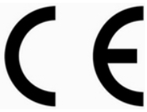CE certification introduction
The “CE” mark is a safety certification mark and is considered as a passport for manufacturers to open and enter the European market.
In the EU market, the “CE” mark is a mandatory certification mark. Whether it is a product produced by a company within the EU or a product produced in other countries, if it is to be freely circulated in the EU market, it must be affixed with the “CE” mark to indicate the product. Conforms to the basic requirements of the EU's "New Method for Technical Coordination and Standardization" directive.
What products does the CE certification apply to? What are the relevant directives for CE certification?
Products exported to EU countries (including Turkey, India, Egypt, Africa and other countries), including: electrical products, building products, machinery and equipment, must be CE certified before they can be cleared and sold locally.
Different products must be used in accordance with different instructions depending on the scope of use.
As of December 2013, the EC issued the following directives (partly):
CE certification process
1. The manufacturer's related laboratory (hereinafter referred to as the laboratory) submits a preliminary application either verbally or in writing.
2. The applicant fills in the CE-marking application form, and provides the application form, product instruction manual and technical documents to our company.
3. Our engineers determine the inspection standards and inspection items and quote them.
4. The applicant confirms the quotation and sends samples and related technical documents to the laboratory.
5. The applicant signs a contract agreement with us and pays the certification fee.
6. Laboratory product testing and review of technical documents.
7. The laboratory provides the applicant with a product test report or technical document (TCF), and a CE certificate of conformity (COC), and a CE mark.
8. Applicant signing CE guarantees self-declaration and affixing CE marking on the product
CE certification requires preparation of information
1. Provide samples required for CE certification testing. (If it is a mechanical product, you need to do risk assessment on site)
2. Provide product technical data: circuit diagrams, assembly drawings, key components list, English manuals, etc.
3. Provide relevant certificates for key components.
The benefits of CE certification
With CE certification, your product can receive a special "passport" that can be freely circulated in 30 European countries. After the EU's eastward expansion, Chinese companies will face a larger European market with a uniform operating rules. With CE certification, as long as the product enters one EU member state, it can enter other member markets.

